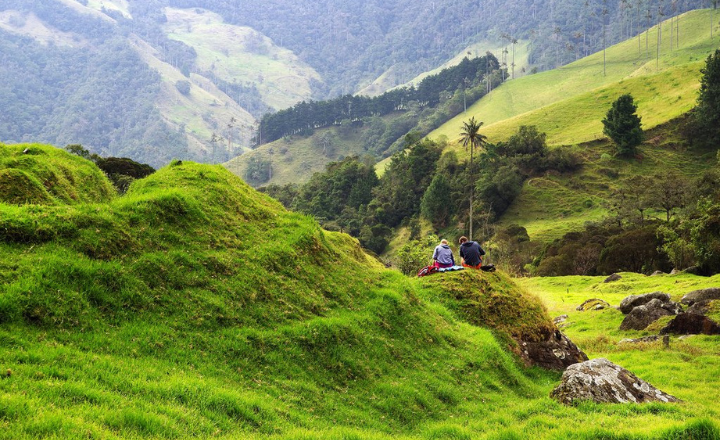Saint Jean Pied de Port: The Ultimate Travel Guide
The Ultimate travel guide is for visiting the most famous sights. The town of St-Jean Pied de Port is especially suited for hikers on the pilgrimage trail. It is situated at the foot of the Pyrenees, hikers should remain bound to visit along the main cobbled street of rue de la Citadelle is a famous tradition.
Nestled at the foot of the Pyrenees, Saint Jean Pied de Port feels like stepping into a storybook… an old one, with stone walls and a vibe that’s both soothing and stirring. It’s more than a pretty village it’s the historic portal for the Camino journey. You arrive, maybe jet‑lagged or excited—or both and suddenly the air carries pilgrims’ footsteps, bell chimes, Basque chatter, and history.
St-Jean-Pied-de-Port is a very charming and attractive town in the world. By visiting this historic town, you will gain peace and comfort. For centuries, this town, 53km southeast of Bayonne, has been the last stop in France for pilgrims heading south over the Spanish border, a mere 8km away, and on to Santiago de Compostela in western Spain.
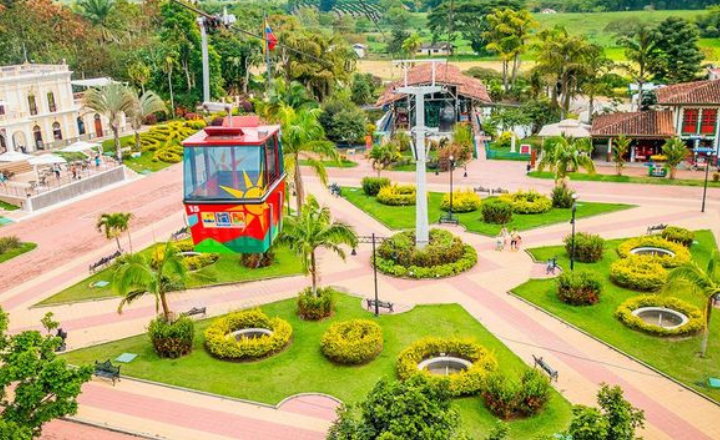
In this guide, you’re in for a mix of old stones, pilgrimage essentials, cafés with Basque flavors, and practical tips that make your visit resonate. We’ll weave in maps, where to stay, what to eat, and yes, how to start that Camino Frances.
In southwestern France, in the Pyrenees foothills, Saint-Jean Pied is a historic fortified town and is popular all over the world. You should visit it to experience a charming medieval town with stunning mountain views.
Where Is Saint Jean Pied de Port, and Why Visit?
1.1 Geographic & Cultural Overview
Saint-Jean-Pied-de-Port is a very old town known for its fortified town in the French Basque Country. The traditional starting point for the Camino Frances is the most famous route of the Camino de Santiago pilgrimage. Geographically, it’s situated in the foothills of the Pyrenees Mountains, which explains its name: “Pied de Port,” meaning “foot of the pass” or “foot of the portal” to Spain.
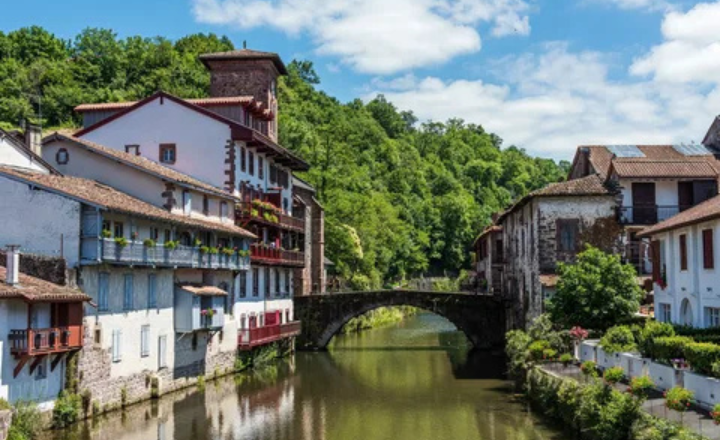
Culturally, the town is rich in history, being the capital of the ancient Basque province of Lower Navarre and retaining its medieval character with a prominent citadel and well-preserved architecture. It was a crucial city during the Middle Ages and played a significant role in the historical events related to the Battle of Roncesvalles.
You must visit this beautiful view to explore its ancient history to make your journey memorable.
Starting the Camino de Santiago from Saint Jean Pied de Port
To visit the Stain-Jean-Pied de Port, we are guiding you to follow some rules to make your tour comfortable. Firstly, start the Camino de Santiago from Saint Jean Pied de Port.
2.1 What Pilgrims Need to Know
Pilgrims need to know that for the Camino Frances is the primary starting point is Saint Jean Pied de Port, the famous way of Camino de Santiago. Due to high demand, pilgrims’ credentials from the Pilgrims Reception office, where pilgrims should book accommodation. You should be prepared for the arduous Pyrenees crossing. Make a plan before starting your journey, and take time to explore the historical town like the Citadel.
2.2 Where to Get Camino Info & Gear
To get Camino information, you have to visit different online sources like Camino Guidebooks, American Pilgrims on the Camino, and the Moon Travel Guide website. If you want to gear up, you will need various kinds of things: dry clothes, hiking shoes, and moisture-wicking socks to travel easily.

When you are visiting Saint Jean Pied de Port, you should do some top things to enjoy and experience excitement.
Top Things to Do in Saint Jean Pied de Port
3.1 Walk the Rue de la Citadelle
First of all, you should walk the Rue de la Citadelle, which is the most famous kind of street in the whole town of Saint Jean Pied de Port, from end to end. Visiting this charming view surrounded by hillside cafes and bakeries, and families chatting from windows, makes your journey unforgettable. People of different languages are present there, German pilgrims, Spanish hikers, and Japanese solo travelers.
3.2 Visit the Citadel (Citadelle de Saint-Jean)
Visiting the Citadel (Citadel de Saint-Jean) is very difficult to see its interior and exterior parts because now it serves as a school, which is not open to the public. In the 17th century citadel watches over the rooftops and surrounding hills, and works as part of Vauban’s defensive design, quiet for its military.

On clear days, you can see all the way toward the Roncesvalles Pass, the route so many pilgrims take on their first day. Some stand up there quietly, like they’re sizing up tomorrow.
3.3 Explore Église Notre-Dame du Bout du Pont
Explore Eglise Notre-Dame du Bout du Pont is a very attractive viewpoint, making your journey enjoyable. It is the originally Gothic church viewed right at the base of Rue de la Citadelle, by the river, “Our Lady at the End of the Bridge”. It’s not grand in a cathedral way, but it feels personal, especially when bells ring inthe mo but it feels personal, especially when bells ring in the morning.
Before setting off on the Camino Frances, pilgrims light candles. It is the atmosphere in which your thoughts settle unless you are religious.
3.4 Discover the Old City Gates (Porte St-Jacques & Porte d’Espagne)
- Discover that the old city gates (Porte Saint-Jacques & Porte d’Espagne) are the most common way for pilgrims’ entry into the Kingdom of Navarre from France. By visiting these old city gates, you can learn new experiences and knowledge. The Porte St-Jacques, part of the UNESCO-listed Camino route, is the symbolic exit for pilgrims leaving Saint Jean Pied de Port.
4. How to Get to Saint Jean Pied de Port
When you are visiting first time Saint Jean Pied de Port you must gain some knowledge about it. How can you reach or get to Saint Jean Pied de Port so that your journey is easy and comfortable?
4.1 From Paris or Bordeaux
- First point to get to Saint Jean Pied de Port starts from Paris or Bordeaux. The first way is easy and the most common path by using a train from Paris to Saint Jean Pied de Port. If you have enough budget, then you can plan to visit ontrain with a high-speed train to Dax or Bayonne, taking about 5-6 hours.
- Second is the regional train that travels directly from Paris to Saint-Jean-Pied-de-Port within of 3-4hours.
- Local train to Saint Jean Pied de Port. The line is slow, winding, and oddly charming. You’ll pass through pastures, small villages, and views that feel like you’re gradually shedding your city skin.
4.2 Airports Nearby
If you have enough budget, then you can travel by airports nearby to get an easy and comfortable zone of your journey. The most nearby airport to Saint-Jean-Pied-de-Port is Biarritz Pays Basque Airport (BIQ) is situated 25 miles away.

Other airports are San Sebastian Airport (EAS) in Spain or Pamplona Airport and Bordeaux–Mérignac Airport (BOD), which are further away but may offer more flight options. From these airports, you will need to take a train, bus, or rent a car to reach Saint-Jean-Pied-de-Port.
4.3 From Spain (Pamplona or San Sebastián)
From Spain, or Pamplona or San Sebastian, that bring pilgrims from pamplona often flights into Madrid-Barajas or Barcelona. It is another way to reach Saint de Port by flight and is difficult, but easy and comfortable.
5. Where to Stay: Hotels, Albergues & Guesthouses
When you are visiting Saint-Jean-Pied-de-Port Port you must have a plan for where to stay in the hotels, albergues, and guesthouses. Select a good hotel and stay according to your budget.
5.1 Budget & Pilgrim-Friendly Options
Whether to stay in Saint-Jean-Pied-de-Port depends on your own budget. Choose a good and comfortable environment with insufficient services. Some famous hotels are
Accommodation: Pilgrim hostels (Gîtes and Albergues)
This is the most significant way to save money and connect with other pilgrims.
- Gîtes d’étape: These are pilgrim hostels in France. They are a communal and affordable lodging option. Many offer dinner and breakfast at a low cost.
- Municipal Albergue Saint-Jacques: This government-run hostel is one of the cheapest options in town. It operates on a first-come, first-served basis, so arrive early to secure a bed.
- Private Albergues: Privately-run gîtes are also available. Some popular and well-rated options include:
- Gîte de la Porte Saint-Jacques: Includes breakfast and is conveniently located near the Pilgrim Registration Office.
- La vita e bella: Known for its friendly hosts and proximity to the pilgrim office.
- Gîte Le Chemin vers l’Etoile: A budget-friendly option with a communal kitchen.
- Sleeping Bag: Bring a sleeping bag, as most gîtes and albergues do not provide
5.2 Boutique & Mid-Range Hotel
Hôtel des Pyrénées offers a refined Basque stay with a gourmet touch
- Maison E. Bernat is more personal, quieter, great river views
- Chambres d’Hotels Maison Gaury is charming, with cozy breakfasts and local insight
5.3 Booking Tips
To visit Saint-Jean-Pied-de-Port, book your accommodation well in advance, especially during peak season, as the town can quickly fill up with pilgrims. For travel, take a train or bus to Bayonne, then catch a connecting train to Saint-Jean-Pied-de-Port.
Consider booking your first night in advance for peace of mind before beginning your pilgrimage. Websites like Booking.com and Trainline can help with booking travel and accommodation.
6. Where to Eat & Drink in Saint Jean Pied de Port
The best way to enjoy and take comfort while traveling is by eating and drinking famous dishes and tasting food to make your journey beautiful.
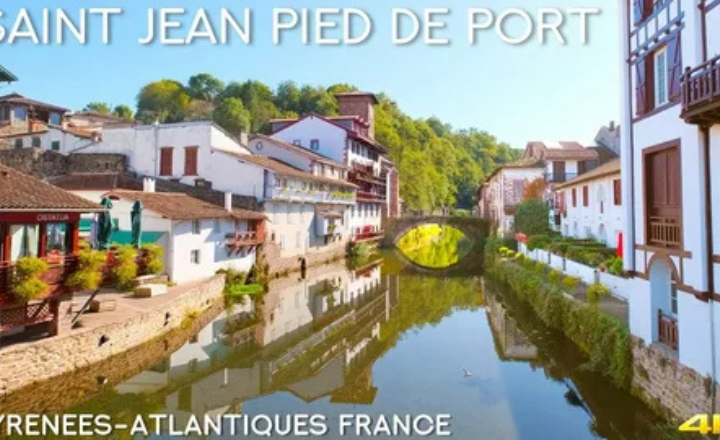
6.1 Local Cuisine Highlights
Food here leans rustic and deeply Basque. Think slow-cooked stews, farm cheese, and wines you won’t find back home. A few must-try dishes include:
- Axoa – a spicy veal stew often served with potatoes. Surprisingly light, given its richness.
- Piperade – made with sweet peppers, tomato, and egg, usually paired with Bayonne ham.
- Fromage de Brebis – sheep cheese that’s often aged… the kind of thing that makes you pause mid-bite.
- Salmais de Palombe – a dense game bird stew, usually cooked down in red wine.
6.2 Recommended Restaurants & Cafés
Saint Jean Pied de Port might be compact, but there’s no shortage of flavor. Here are a few places that stand out, whether you’re dining solo, with fellow pilgrims, or just in for a lazy lunch:
- Le Petit Gourmand – Friendly staff, local menu, and just enough formality without being stuffy.
- Café Ttipia – Basque comfort food, wooden beams, and a terrace view over the river.
- Les Remparts – Slightly more upscale, often overlooked, but a gem if you want quiet and great wine.
- Pilgrim set menus – Offered in most Saint Jean Pied de Port restaurants, these are filling, affordable, and usually come with wine, bread, a starter, and dessert.
7. What to Pack for Your Visit or Camino Start
Going on the trip, you should pack essential items that are necessary and usable during visiting or Camono start.
7.1 Essentials for Pilgrims
Before planning, it is very necessary and must keep remember what to pack for pilgrims to make your journey easy and enjoyable. Packing can feel like a puzzle, especially if you’re beginning your Camino Saint-Jean Pied de Port route. But most of what you truly need is pretty simple:
- Trail-ready shoes. You should already have experience with wearing trail-ready shoes that will be helpful to enjoy your trip freely.
- Quick-dry clothes. Take dry clothes extra to change daily. – at least 2–3 changes
- Rain jacket or shell. The Pyrenees is a very cold environment, you must take a jacket or a shell.
- Head Flashlight – useful for early departures or shared dorms
- Water bottle – fountains are common
- Guidebook or map – like a Camino Francés overview, or even a St Jean Pied de Port to Santiago map
8. When to Visit Saint Jean Pied de Port
It all depends on your mood, your budget, and you must see whether the conditions , rainy or dry that give you comfort and peace. You should try to visit Saint-Jean Pied de Port beacuse the whether of Saint Jean Pied de Port is very charming and attractive but in all the year it remains balance but best time is summer.
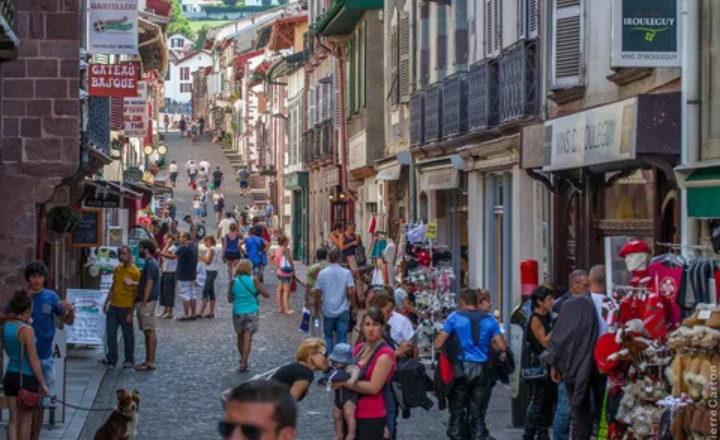
8.1 Best time to visit Saint Jean Pied de Port:
- April to June is the best time of flower blooming and mild temperature is sufficient for your traveling.
- July to August is enough warm and croweds of people are visiting there.
- November to March is the off season , hotels and shops are closed and Pilgrims are seen less.
If you’re walking the Camino Saint-Jean Pied de Port, late spring or early fall often hits that sweet spot. Enough fellow travelers to share stories with, but not so many that you’re queuing for a bed. And the skies? Sometimes just ridiculously blue.
Conclusion
Saint jean Pied de Port is very famous place in the france and popular in all world as a toristy view point. It gives a very ancient route and history. You hear walking sticks tapping on the stones and then… a quiet café laugh, or church bells echoing off the Pyrenees.
Whether you’re heading out on the Camino de Santiago, diving deep into Basque country, or just meandering with no particular plan, this town makes you pause. It kind of insists on it.
And maybe that’s what makes it unforgettable. Not just the places you see the Citadelle, the Porte St Jacques, the cobbled Rue de la Citadelle but how it makes you feel. Like the journey already started long before your feet hit the trail.
FAQs
1. Is Saint Jean Pied de Port only for Camino pilgrims?
Not at all. While it’s famous as the start of the Camino Francés, it’s also just a charming old town in the French Basque country.
2. How many days should I spend in Saint Jean Pied de Port?
If you’re walking the Camino, you might only stay one night. But if you’re here to soak up the vibe, two to three days gives you enough time to explore the old town, do a short hike, and even take a peek at the surrounding Pays de Saint-Jean-Pied-de-Port villages.
3. What’s the best way to get there?
It depends on where you’re coming from. From Paris or Bordeaux, most people take a train via Bayonne. If you’re flying in, Biarritz Airport is the closest. You could also rent a car and make it part of a longer Basque road trip.
4. Is there a map of Saint Jean Pied de Port I can use to explore on foot?
Yes, the Saint Jean Pied de Port map is available at the Pilgrims’ Office and tourist info centers. It highlights main landmarks like the Porte d’Espagne, Rue de la Citadelle, and Citadel viewpoint, as well as restaurants, hotels, and local shops.

